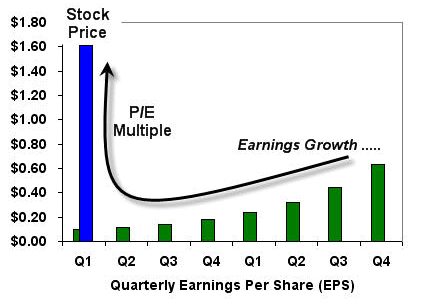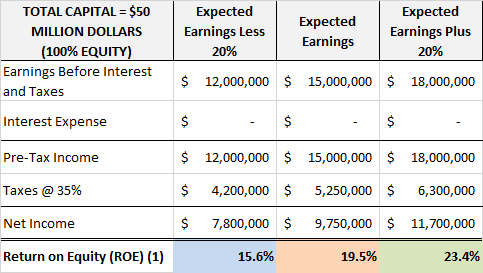Income Value and Growth Stocks investopedia Good Articles to Share
Post on: 12 Июнь, 2015 No Comment

Income, Value and Growth Stocks — investopedia
Investors who buy stocks typically do so for one of two reasons: they believe that the price will rise and allow them to sell the stock at a profit, or they intend to collect the dividends paid on the stock as investment income. Of course, some stocks can satisfy both objectives at least to some extent, but most stocks can be classified into one of three categories: growth, income and value. Those who understand the characteristics of each type of stock can use this knowledge to grow their portfolios more efficiently.
Growth Stocks
As the name implies, growth companies by definition are those that have substantial potential for growth in the foreseeable future. Growth companies may currently be growing at a faster rate than the overall markets, and they often devote most of their current revenue toward further expansion. Every sector of the market has growth companies, but they are more prevalent in some areas such as technology, alternative energy and biotechnology.
Most growth stocks tend to be newer companies with innovative products that are expected to make a big impact in the market in the future, but there are exceptions. Some growth companies are simply very well-run entities with good business models that have capitalized on the demand for their products. Growth stocks can provide substantial returns on capital. but many of them are smaller, less-stable companies that may also experience severe price declines.
An example of a growth company is:
- Starbucks (Nasdaq:SBUX ) This coffee giant still has a great deal of room to grow. Its aggressive expansion plans include substantial additional penetration into international markets, with plans to double its presence overseas by 2015. Starbucks intends to make further inroads into China and Vietnam, potentially growing that region into its second-largest market by next year. The companys domestic goal is to open more than 3,000 new locations in North and South America by 2017. It is also expanding into home-brewing territory and has gained a key foothold in the tea market with its acquisition of Teavana, a chain of over 600 tea stores. Howard Schultz, the company CEO, has done an excellent job of using social media and customer loyalty programs to increase revenue and promote the brand name.
Value Stocks
Undervalued companies can often provide long-term profits for those who do their homework. A value stock trades at a price below where it appears it should be based on its financial status and technical trading indicators. It may have high dividend payout ratios or low financial ratios such as price-to-book or price-to-earnings ratios. The stock price may also have dropped due to public perception regarding factors that have little to do with the companys current operations. For example, the stock price of a well-run, financially sound company may drop substantially for a short time period if the company CEO becomes embroiled in a serious personal scandal. Smart investors know that this is a good time to buy the stock, as the public will soon forget about the incident and the price will most likely revert to its previous level.
Of course, the definition of what exactly is a good value for a given stock is somewhat subjective and varies according to the investors philosophy and point of view. Value stocks are typically considered to carry less risk than growth stocks because they are usually found with larger, more-established companies. However, their prices do not always return to their previous higher levels as expected.
An example of a good value stock in 2013 is:
- McDonalds (NYSE:MCD ) This stock was trading at around $90 per share in January 2013, and some analysts felt that the stock was properly valued at $97 a share due to its projected 5% growth of corporate revenue and 9% growth of company earnings. By July 2013, the stock reached this target price.

Income Stocks
Investors look to income stocks to bolster their fixed-income portfolios with dividend yields that typically exceed those of guaranteed instruments such as treasury securities or CDs .
There are two main types of income stocks. Utility stocks are common stocks that have historically remained fairly stable in price but usually pay competitive dividends. Preferred stocks are hybrid securities that behave more like bonds than stocks. They often have call or put features or other characteristics, but also pay competitive yields.
Although income stocks can be an attractive alternative for investors unwilling to risk their principal, their values can decline when interest rates rise.
One example of a good income stock is:
- AT&T (NYSE:T ) The company is financially sound and carries a reasonable amount of debt, and the stock has a current dividend yield above 5%.
How to Find Stocks in These Categories
There is no one right way to discover specific types of stocks. Those who want growth can peruse investing websites or bulletin boards for lists of growth companies, and then do their own homework on them. Many analysts also publish blogs and newsletters that tout stocks in each of the three categories. Those looking for income can calculate the dividend yields on common and preferred offerings, and then evaluate the amount of risk in the security. There are also stock screening programs available that investors can use to search for stocks according to specific criteria, such as dividend yields or financial ratios.
The Bottom Line
Stocks can provide a return on capital from future growth, current undervaluation or dividend income. Many stocks (such as AT&T) offer some combination of these, and smart investors know that dividends can make a substantial difference in the total return they receive. For more information on types of stocks, consult your stockbroker or financial advisor.














